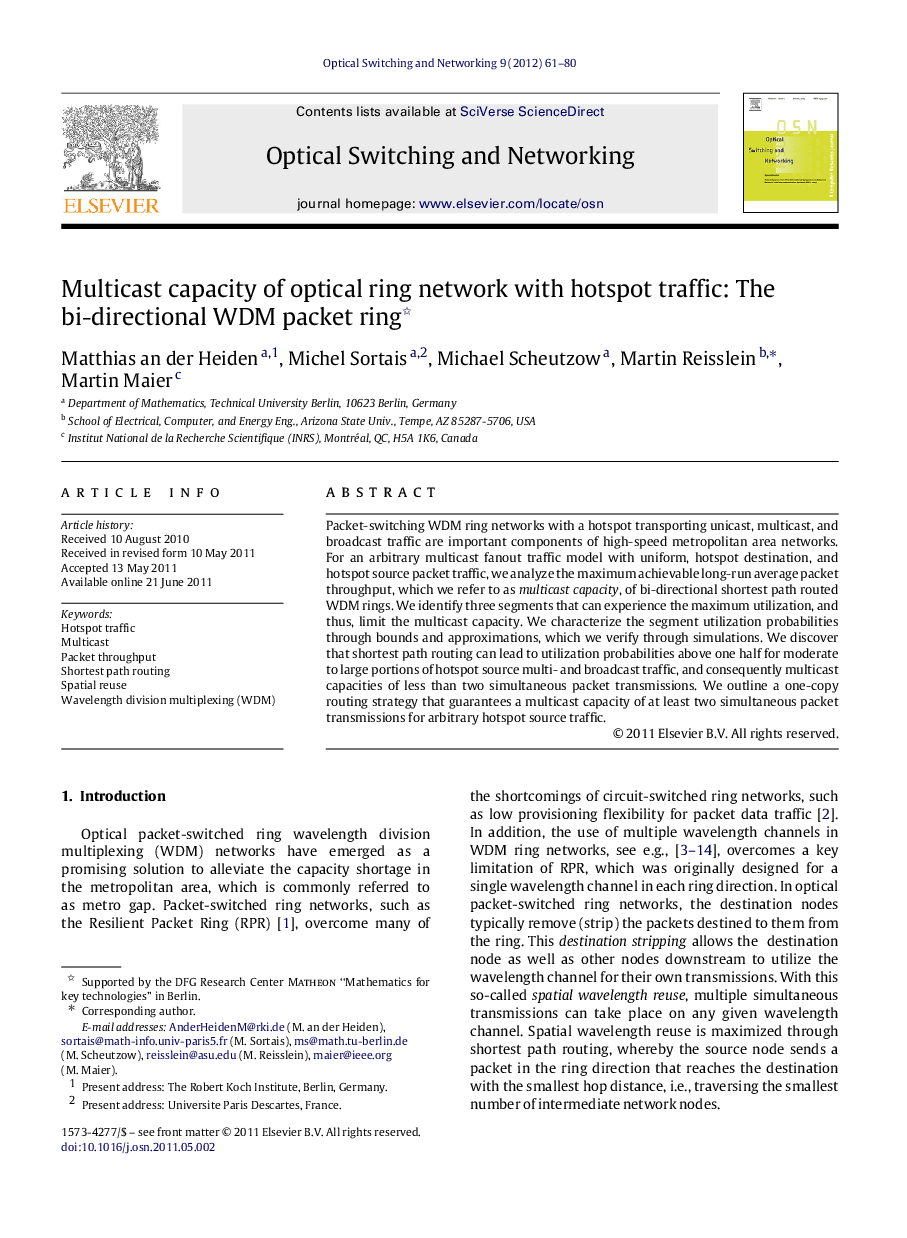| Article ID | Journal | Published Year | Pages | File Type |
|---|---|---|---|---|
| 463627 | Optical Switching and Networking | 2012 | 20 Pages |
Packet-switching WDM ring networks with a hotspot transporting unicast, multicast, and broadcast traffic are important components of high-speed metropolitan area networks. For an arbitrary multicast fanout traffic model with uniform, hotspot destination, and hotspot source packet traffic, we analyze the maximum achievable long-run average packet throughput, which we refer to as multicast capacity, of bi-directional shortest path routed WDM rings. We identify three segments that can experience the maximum utilization, and thus, limit the multicast capacity. We characterize the segment utilization probabilities through bounds and approximations, which we verify through simulations. We discover that shortest path routing can lead to utilization probabilities above one half for moderate to large portions of hotspot source multi- and broadcast traffic, and consequently multicast capacities of less than two simultaneous packet transmissions. We outline a one-copy routing strategy that guarantees a multicast capacity of at least two simultaneous packet transmissions for arbitrary hotspot source traffic.
► Three segments can have maximum utilization in a WDM optical packet ring with multicast traffic. ► Hotspot source multicast can lead to a capacity of less than two simultaneous packet transmissions. ► One-copy routing guarantees a capacity of at least two simultaneous packet transmissions.
